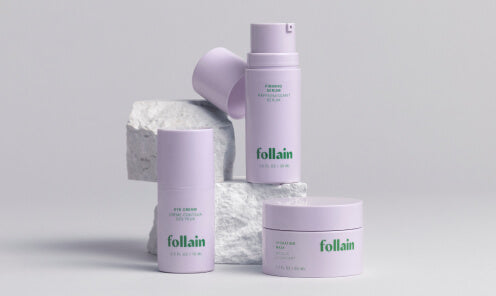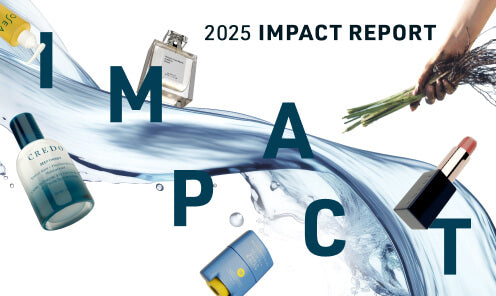Written By Mia Davis, Director of Environmental & Social Responsibility
These are very heavy times in the US. The recent killing of George Floyd, one of so many Black people murdered by police1, coupled with the COVID-19 pandemic’s disproportionate impact on people of color2, shine a spotlight on the huge disparities and fragility of virtually every national system we have. Policing, the justice system, healthcare, schools, the market… this list goes on.Yet, these two major, current issues are only the tip of the iceberg–not in that they are small, but in that they are what we see right now. There is a whole lot more underneath the chilly water. One of the major threads that runs through this, and through our work at Credo, is Environmental Racism.
People who live, work and play in America's most polluted environments are commonly Black, Indigenous, People of Color (BIPOC) and/or the poor. This is not a coincidence. It is by design. The statistics provide clear evidence of what the Environmental Justice Movement calls "environmental racism.”
For example: building petrochemical pipelines and chemical manufacturing plants–many of them making extremely toxic chemicals–in low-income and/or BIPOC communities. In fact, 7 out of 10 of the US communities with the highest cancer risks are located in “Cancer Alley,” Louisiana, home to more than 150 chemical plants and refineries.3 Cancer Alley communities that are the most affected are low-income, and largely Black and minority.4 In fact, residents of St James Parish in Cancer Alley are currently protesting the construction of a 2,300-acre, $9.4 billion petrochemical complex making chemicals to use in plastic. The facility–which is sited on ancestral burial grounds; talk about adding insult to injury–would double toxic emissions in this overburdened area. And to further entrench the fact that they think the chemical industry is more valuable than Black lives, a new law in Louisiana would make protesting at fossil fuel sites punishable by a mandatory minimum of three years in prison “at hard labor” and a maximum of 15 years, and up to $5,000 in fines.5
This is another layer of literally toxic injustice that needs nothing short of a reckoning, a complete overhaul.
These toxic chemicals end up in every crack and crevice of the world, including consumer products and packaging, and inside our bodies6 (and, of course, wildlife).7 No one is unaffected. But the exposures are not equal. In addition to the site-specific exposures, studies show that Black Indigenous People of Color (BIPOC) are exposed to indoor pollutants at levels greater than in white populations8
. In addition, some of the cosmetic products traditionally marketed to BIPOC (such as skin lighteners and hair relaxers) contain some of the most concerning chemicals.9Credo prohibits chemicals known to contribute to cancer and other serious health problems (learn more about our Dirty List here), and we are working to drastically reduce our industry’s use of petrochemicals (specifically in plastic packaging). We have to work together to protect people’s health and the environment from egregious acts of toxic trespass like those in Cancer Alley.
Our commitment to Environmental Justice and all forms of justice, notably Black Lives Matter, is unwavering. To see how you can get involved and help end petrochemical pollution in Louisiana visit the Louisiana Bucket Brigade.
More about Mia Davis:

Mia is the Director of Environmental and Social Responsibility at Credo. Her career began in the environmental health movement. In 2007, she co-led the Campaign for Safe Cosmetics. Davis was Head of Environment, Health and Safety at Beautycounter for 5 years, and she's now helping Credo brands and customers define and lead the "clean beauty" sector.
_____________________________________________
1 “A Decade Of Watching Black People Die.” NPR, May 2020 https://www.npr.org/2020/05/29/865261916/a-decade-of-watching-black-people-die
2 “Disproportionately black counties account for over half of coronavirus cases in the U.S. and nearly 60% of deaths, study finds.” Washington Post, May 2020.
3 “Wake Up Call.” Grist, May 2020. https://grist.org/justice/as-coronavirus-ravages-louisiana-cancer-alley-residents-havent-given-up-the-fight-against-polluters/;
4 Wesley James, Chunrong Jia, and Satish Kedia. “Uneven Magnitude of Disparities in Cancer Risks from Air Toxins.” https://www.ncbi.nlm.nih.gov/pmc/articles/PMC3546767/, Dec 2012
5 “RESIDENTS, CIVIL RIGHTS GROUPS, NATIONAL LEGAL ORGANIZATIONS CALL ON ST. JAMES PARISH COUNCIL TO RESCIND FORMOSA PLASTICS LAND USE DECISION,” Dec 2019 https://earthjustice.org/news/press/2019/residents-civil-rights-groups-national-legal-organizations-call-on-st-james-parish-council-to-rescind-formosa; https://www.huffpost.com/entry/louisiana-bill-fossil-fuel-protests-slave-cemetery_n_5ed197d8c5b6eb7566d758d9, May 2020
6 Adamkiewicz G, Zota AR, Fabian MP, Chahine T, Julien R, Spengler JD, et al. Moving environmental justice indoors: understanding structural influences on residential exposure patterns in low-income communities. Am J Public Health 2011;101(suppl 1):S238–45
8 Adamkiewicz G, Zota AR, Fabian MP, Chahine T, Julien R, Spengler JD, et al. Moving environmental justice indoors: understanding structural influences on residential exposure patterns in low-income communities. Am J Public Health 2011;101(suppl 1):S238–45
9 Campaign for Safe Cosmetics webpage on Women of Color. http://www.safecosmetics.org/get-the-facts/whats-in-my-products/people/women-of-color/












